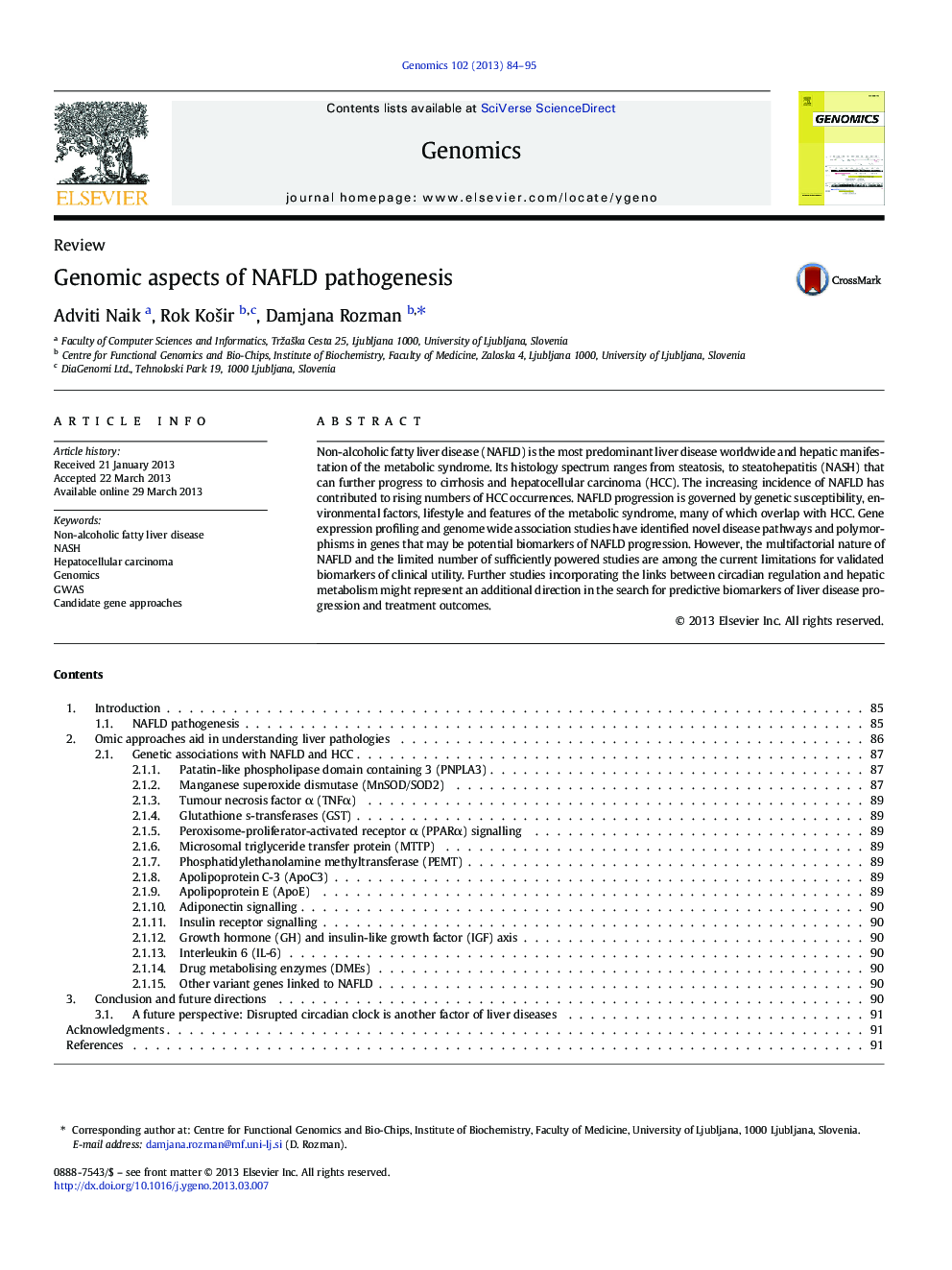| کد مقاله | کد نشریه | سال انتشار | مقاله انگلیسی | نسخه تمام متن |
|---|---|---|---|---|
| 2820957 | 1160910 | 2013 | 12 صفحه PDF | دانلود رایگان |

• Genomic studies in the context of NAFLD and HCC have been reviewed.
• NAFLD and HCC pathogenesis highlight overlapping disease pathways.
• Genetic association studies identified several SNPs associated with NAFLD and HCC.
• Identified SNPs need to be replicated in large multi-ethnic populations.
• Circadian regulatory mediators may be potential predictors of NAFLD progression.
Non-alcoholic fatty liver disease (NAFLD) is the most predominant liver disease worldwide and hepatic manifestation of the metabolic syndrome. Its histology spectrum ranges from steatosis, to steatohepatitis (NASH) that can further progress to cirrhosis and hepatocellular carcinoma (HCC). The increasing incidence of NAFLD has contributed to rising numbers of HCC occurrences. NAFLD progression is governed by genetic susceptibility, environmental factors, lifestyle and features of the metabolic syndrome, many of which overlap with HCC. Gene expression profiling and genome wide association studies have identified novel disease pathways and polymorphisms in genes that may be potential biomarkers of NAFLD progression. However, the multifactorial nature of NAFLD and the limited number of sufficiently powered studies are among the current limitations for validated biomarkers of clinical utility. Further studies incorporating the links between circadian regulation and hepatic metabolism might represent an additional direction in the search for predictive biomarkers of liver disease progression and treatment outcomes.
Journal: Genomics - Volume 102, Issue 2, August 2013, Pages 84–95